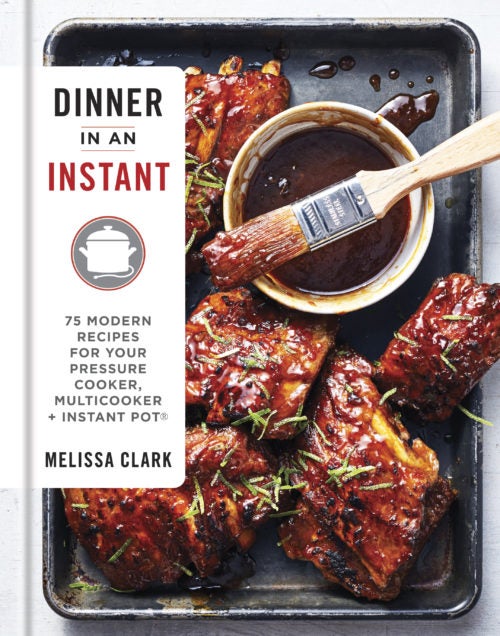Duck Confit
4
servings
Main
Course
Print Recipe
Ingredients
Directions
Ingredients
1 tbsp
kosher salt

4
sprigs fresh thyme

4
garlic cloves, smashed

2
bay leaves, torn in half

¼ tsp
black peppercorns, lightly crushed

¼ tsp
allspice berries, lightly crushed

4
duck legs (drumsticks and thighs)

This recipe might be my favorite way to use the electric pressure cooker: It is an easy and relatively quick method for making meltingly tender duck confit. You won’t need to add any extra duck fat to the pot; the duck here cooks in its own rendered fat, after which it emerges soft-fleshed and flavorful, and ready to be quickly crisped up under the broiler before serving. You’ll also end up with extra rendered duck fat. I like to save that fat for frying and roasting. Store it in an airtight container in the refrigerator, where it will last for up to 3 months, or freeze it for up to a year. It is absolutely wonderful for cooking potatoes.
Directions
- Line a small rimmed baking sheet or a plate with paper towels. In a large bowl, stir together the salt, thyme, garlic, bay leaves, peppercorns, and allspice. Add the duck legs and toss, covering the legs evenly with the salt. Place the duck legs in a single layer on the baking sheet and refrigerate, uncovered, for at least 24 hours and up to 3 days.
- Brush the garlic and thyme sprigs off the duck, reserving them. Using the sauté function, arrange the duck legs, skin-side down, in the pressure cooker, with as much of the flesh touching the bottom of the pot as possible. Sear until the skin turns golden brown and the fat starts to render, 5 to 10 minutes. Flip the duck legs over and sear on the other side for 5 to 10 minutes. Scatter the reserved garlic and thyme on top of the duck.
- Cover and cook the duck legs on high pressure for 40 minutes, and then release the pressure manually. Flip the legs over, and cook on high pressure for another 30 minutes. Let the pressure release naturally.
- Let the duck cool completely, and then store it, covered in its own rendered fat (there will be lots of it in the pot), in the refrigerator. Note that you will be left with a dark brown liquid—the duck stock—that will separate from the white duck fat as the confit cools. Save this delicious elixir. You can use it for sauces, soups, or anywhere you need a good, concentrated meat or poultry stock. It also freezes well.
- When you are ready to serve, heat the broiler.
- Scrape fat off duck legs. Transfer the duck to a rimmed baking sheet and broil until the skin is crispy, 3 to 5 minutes (or you can crisp up the duck in a hot, dry skillet).

